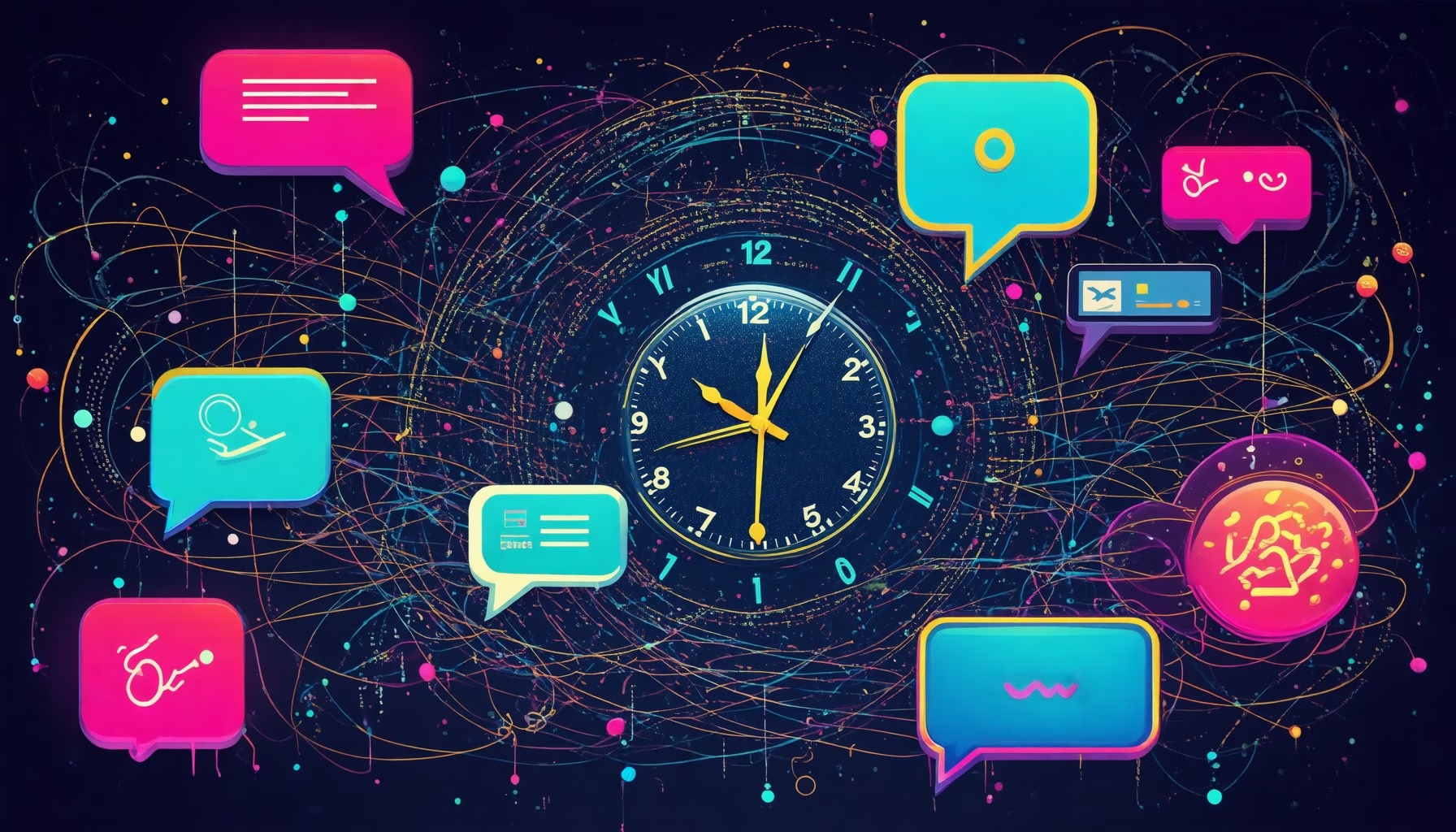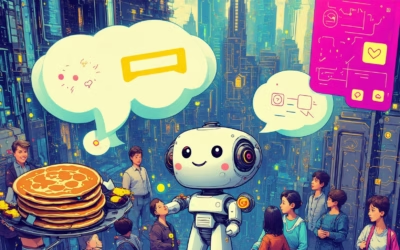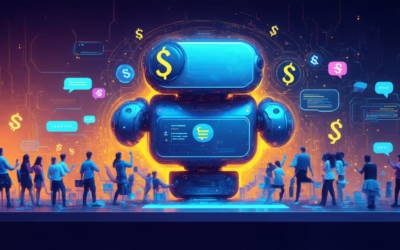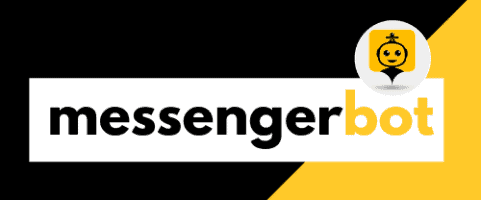Key Takeaways
- Open Source Chatbots: Leverage platforms like Rasa, Botkit, and ChatterBot to create customizable chatbots that enhance user engagement on your website.
- Cost-Effective Solutions: Utilize open source chatbots to eliminate licensing fees, enabling businesses to allocate resources more efficiently.
- Seamless Integration: Easily integrate chatbots with popular website builders such as WordPress, Wix, and Shopify for enhanced functionality.
- Enhanced Customer Interaction: Implementing chatbots can provide 24/7 support, automate responses, and improve overall customer satisfaction.
- Community Support: Benefit from active communities surrounding open source chatbot platforms, offering resources, troubleshooting, and shared experiences.
- Real-World Applications: Explore successful case studies of open source chatbots enhancing customer service and lead generation across various industries.
In today’s digital landscape, enhancing user engagement on your website is more crucial than ever, and an open source chatbot for website integration can be a game-changer. This article, titled Mastering the Open Source Chatbot for Your Website: From Creation to Interaction and Real-World Examples, will guide you through the exciting world of open source chatbots, exploring their benefits, implementation strategies, and real-world applications. We will delve into whether there are any viable open source chatbots, how you can seamlessly add a chatbot to your site, and the tools available for creating a free chatbot tailored to your needs. Additionally, we will examine the interactivity of chatbots with web elements, highlight platforms like Rasa and Hexabot, and provide valuable resources and community insights for further exploration. By the end of this article, you’ll be equipped with the knowledge to leverage open source chatbot platforms effectively, ensuring your website stands out in a crowded marketplace.
Are there any open source chatbots?
Yes, there are several open-source chatbots available that cater to various needs and platforms. Here are some of the most notable options in 2025:
- Botkit: Botkit is a robust open-source chatbot framework that allows developers to create conversational experiences across multiple platforms, including Slack, WhatsApp, Facebook Messenger, Google Hangouts, and Twilio SMS. It offers a comprehensive set of features, including natural language processing (NLP) capabilities, and is supported by a vibrant community, making it easier for developers to find resources and support. For more information, visit the official Botkit documentation.
- Rasa: Rasa is an advanced open-source framework for building contextual AI assistants. It provides tools for natural language understanding (NLU) and dialogue management, allowing developers to create highly customizable chatbots. Rasa is particularly known for its flexibility and scalability, making it suitable for both small projects and enterprise-level applications. The Rasa community is active, providing extensive documentation and support. Learn more at Rasa’s official site.
- ChatterBot: ChatterBot is a Python library designed to make it easy to create chatbots that can engage in conversations. It uses machine learning algorithms to generate responses based on the input it receives, allowing for a more dynamic interaction. ChatterBot is user-friendly and suitable for developers with varying levels of experience. For further details, check out the ChatterBot GitHub repository.
Overview of Open Source Chatbots
Open source chatbots are software solutions that allow developers to create and customize chatbots without the constraints of proprietary software. These platforms provide the flexibility to modify the code, integrate various APIs, and tailor functionalities to meet specific business needs. By leveraging open source chatbot platforms, businesses can enhance customer engagement through automated responses and personalized interactions.
Some popular open source chatbot platforms include Botkit, Rasa, and ChatterBot, each offering unique features and capabilities. These tools enable developers to build chatbots that can handle customer inquiries, provide support, and even facilitate transactions, making them invaluable for modern digital communication.
Benefits of Using Open Source Chatbots for Websites
Utilizing open source chatbots for websites comes with numerous advantages:
- Cost-Effective: Open source solutions eliminate licensing fees, allowing businesses to allocate resources elsewhere.
- Customization: Developers can modify the code to create tailored experiences that align with specific business objectives.
- Community Support: Many open source projects have active communities that provide support, resources, and updates, ensuring that users can troubleshoot issues effectively.
- Integration Capabilities: Open source chatbots can easily integrate with existing systems and APIs, enhancing their functionality and usability.
Incorporating an open source chatbot for your website can significantly improve customer interactions and streamline communication processes, ultimately leading to enhanced user satisfaction and engagement.
Can I add a chatbot to my website?
Yes, you can add a chatbot to your website, and doing so can enhance user engagement and improve customer service. Here’s a comprehensive guide on how to integrate an AI chatbot into your website, focusing on popular platforms and best practices.
Steps to Integrate an Open Source Chatbot into Your Website
- Choose the Right Chatbot Platform: Select a chatbot service that fits your needs. Popular options include Tidio, Drift, and Intercom. These platforms offer various features such as live chat, automated responses, and integration with CRM systems.
- Integration with Website Builders: Most chatbot platforms provide easy integration with popular website builders like WordPress, Wix, and Shopify. Here’s how to add a chatbot to some of these platforms:
- WordPress: Install the chatbot plugin from the WordPress repository, activate it, and follow the setup instructions to customize your chatbot’s appearance and behavior.
- Wix: Use the Wix App Market to find your chosen chatbot app, click “Add to Site,” and configure the settings to match your branding.
- Shopify: Go to the Shopify App Store, select a chatbot app, and follow the installation prompts to integrate it into your online store.
- Customization and Training: After integration, customize the chatbot’s responses to align with your brand voice. Train the bot using FAQs and common customer inquiries to ensure it provides accurate and helpful information.
- Testing and Optimization: Before going live, test the chatbot to ensure it functions correctly. Monitor interactions and gather user feedback to continuously improve its performance.
- Utilizing Messenger Bots: If you want to expand your chatbot capabilities, consider integrating a Messenger Bot. This allows you to engage with users on platforms like Facebook Messenger, providing a seamless experience across channels.
- Analytics and Performance Tracking: Use analytics tools provided by your chatbot platform to track user interactions, response times, and overall engagement. This data will help you refine your chatbot strategy over time.
By following these steps, you can effectively add a chatbot to your website, enhancing user experience and driving engagement. For further reading, consider resources from HubSpot and Chatbots Magazine, which provide in-depth insights into chatbot implementation and best practices.
Best Practices for Chatbot Implementation on Websites
Implementing a chatbot on your website requires careful consideration to maximize its effectiveness. Here are some best practices to keep in mind:
- Define Clear Objectives: Before deploying a chatbot, establish what you want to achieve. Whether it’s improving customer service, generating leads, or providing information, having clear goals will guide your chatbot’s design and functionality.
- Keep Conversations Natural: Design the chatbot to communicate in a friendly and conversational tone. This enhances user experience and encourages engagement. Utilize an open source chatbot web UI that allows for a more personalized interaction.
- Provide Quick Access to Human Support: While chatbots can handle many inquiries, ensure users can easily reach a human representative if needed. This builds trust and improves customer satisfaction.
- Regularly Update Content: Keep the chatbot’s knowledge base current by regularly updating it with new information, FAQs, and responses based on user interactions. This ensures it remains relevant and helpful.
- Monitor Performance and Iterate: Use analytics to track how users interact with the chatbot. Analyze data to identify areas for improvement and make necessary adjustments to enhance performance.
By adhering to these best practices, you can ensure that your open source chatbot for website not only meets user expectations but also drives engagement and satisfaction. For additional insights, explore analyzing customer feedback to refine your chatbot strategy.
How to Create a Free Chatbot for Your Website?
Creating a chatbot for your website can enhance user engagement and streamline customer service. Follow these comprehensive steps to build a free chatbot effectively:
- Define the Purpose of Your Chatbot: Identify the specific tasks your chatbot will handle, such as answering FAQs, booking appointments, or providing product recommendations. A clear purpose will guide the design and functionality.
- Choose the Right Platform: Select a chatbot platform that offers free options, such as Chatfuel, Tidio, or ManyChat. These platforms provide user-friendly interfaces and templates to simplify the creation process.
- Design the Conversation Flow: Utilize a chatbot editor to map out the conversation flow. Consider user intents and design responses that are clear and concise. Incorporate decision trees to guide users through various scenarios.
- Integrate with Your Website: Embed the chatbot on your website using the provided code snippet from your chosen platform. Ensure it is easily accessible, typically in the bottom corner of your site.
- Test Your Chatbot: Conduct thorough testing to identify any issues in the conversation flow or functionality. Engage with the chatbot as a user would to ensure it responds accurately and effectively.
- Train Your Chatbot: Use machine learning features available on your platform to improve the chatbot’s responses over time. Regularly update the training data based on user interactions to enhance accuracy.
- Collect User Feedback: After launching your chatbot, gather feedback from users to identify areas for improvement. Use analytics tools provided by the platform to track engagement metrics and refine the chatbot’s performance.
- Continuously Optimize: Regularly review and update your chatbot based on user interactions and feedback. Stay informed about new features and trends in chatbot technology to keep your bot relevant and effective.
Tools and Platforms for Creating Free Open Source Chatbots
When it comes to creating a free open source chatbot for your website, several platforms stand out for their ease of use and functionality:
- Rasa: An open source chatbot platform that allows developers to build highly customizable chatbots using machine learning. Rasa is ideal for those looking to create complex conversational agents.
- Botpress: This open source chatbot framework offers a visual interface for designing chatbots and supports multiple messaging channels. It’s perfect for businesses wanting to integrate chatbots into their existing systems.
- Dialogflow: While not entirely open source, Dialogflow offers a free tier and is widely used for building conversational interfaces. It provides natural language processing capabilities that enhance user interactions.
- Chatbot.com: This platform offers a free trial and is user-friendly, making it suitable for beginners. It allows for easy integration with websites and social media platforms.
For more insights on chatbot creation, you can explore resources like Brain Pod AI’s Multilingual AI Chat Assistant, which can help enhance your chatbot’s capabilities.
Can a Chatbot Interact with Websites?
Yes, a chatbot can interact with websites, serving as an essential tool for enhancing user engagement and providing instant support. A website chatbot utilizes artificial intelligence (AI) to facilitate real-time communication between users and the website. It can handle inquiries outside of business hours, ensuring that users receive assistance whenever they need it. When a user types a question into the chatbot interface, the AI analyzes the input and retrieves the most relevant information from its database, providing accurate and timely responses.
Understanding Chatbot Interactivity with Web Elements
Chatbots are designed to seamlessly integrate with various web elements, enhancing the overall user experience. Here’s how they interact:
- 24/7 Availability: Chatbots operate around the clock, allowing businesses to engage with customers at any time, which can lead to increased customer satisfaction and retention.
- Cost-Effective Support: By automating responses to frequently asked questions, chatbots reduce the need for extensive customer service teams, thereby lowering operational costs.
- Data Collection: Chatbots can gather valuable insights from user interactions, helping businesses understand customer needs and preferences better.
- Integration with Other Platforms: Some chatbots can integrate with messaging platforms like Facebook Messenger, allowing users to interact with businesses through familiar channels. This integration can enhance user experience by providing seamless communication options.
- Recent Trends: The use of natural language processing (NLP) in chatbots has significantly improved their ability to understand and respond to complex queries. According to a report by Gartner, by 2025, 75% of customer service interactions will be powered by AI, highlighting the growing reliance on chatbots in customer engagement strategies.
Real-World Examples of Chatbots Interacting with Websites
Several open source chatbot platforms have demonstrated effective interaction capabilities on websites. For instance, Brain Pod AI offers a multilingual AI chat assistant that can engage users in their preferred language, enhancing accessibility and user satisfaction. Additionally, many businesses utilize open source customer chat solutions that allow for tailored interactions based on user behavior, further optimizing engagement.
Open source chatbot web UI examples can be found across various industries, showcasing how these tools can be customized to meet specific business needs. By leveraging open source chatbot platforms, businesses can create unique user experiences that drive engagement and improve customer service.
Is Rasa Open Source Free?
Yes, Rasa is open source and free to use. Rasa provides a Developer Edition that can be downloaded at no cost, allowing developers to build and deploy conversational AI applications. However, it’s important to note that Rasa also offers an enterprise version with additional features and support tailored for businesses looking for more robust solutions.
Exploring Rasa as an Open Source Chatbot Platform
Rasa stands out as a leading open source chatbot for website development, offering a robust framework for creating conversational agents. Key points about Rasa’s offerings include:
- Open Source Accessibility: The Rasa Open Source framework is available for anyone to use, modify, and distribute under the Apache 2.0 license. This encourages community contributions and innovation.
- Enterprise Features: The enterprise version includes advanced capabilities such as enhanced security, compliance features, and dedicated support, which are beneficial for larger organizations.
- Community and Resources: Rasa has a strong community of developers and extensive documentation, tutorials, and forums that can help users get started and troubleshoot issues.
- Integration Capabilities: Rasa can be integrated with various messaging platforms, including Messenger Bot, which allows for seamless deployment of chatbots across different channels.
Comparison of Rasa with Other Open Source Chatbot Platforms
When evaluating open source chatbot platforms, Rasa often comes up against competitors like Botpress and Dialogflow. Each platform has its unique strengths:
- Rasa: Best for developers seeking flexibility and control over their chatbot’s functionality.
- Botpress: Offers a user-friendly interface with visual flow builders, making it ideal for non-technical users.
- Dialogflow: Provides powerful natural language processing capabilities but may involve costs for advanced features.
For more detailed information, you can refer to Rasa’s official documentation and community forums, which provide insights into best practices and use cases.
What is Hexabot?
Hexabot is an open-source AI chatbot and agent builder designed to facilitate the creation and management of multi-channel and multilingual chatbots. It provides developers with a flexible framework to build conversational agents that can be deployed across various platforms, enhancing user engagement and support.
Introduction to Hexabot and Its Features
Hexabot stands out in the realm of open source chatbot platforms due to its robust features aimed at improving user interaction. Key features of Hexabot include:
- Multi-Channel Support: Hexabot allows integration with various messaging platforms, enabling chatbots to interact with users on their preferred channels, such as websites, social media, and messaging apps.
- Multilingual Capabilities: The platform supports multiple languages, making it easier for businesses to reach a global audience and provide localized customer support.
- Customizable Templates: Users can leverage pre-built templates to quickly set up chatbots tailored to specific industries or use cases, reducing development time.
- User-Friendly Interface: Hexabot offers an intuitive interface that simplifies the chatbot creation process, allowing users with varying technical expertise to build and manage their bots effectively.
- Integration with APIs: The platform supports integration with third-party APIs, enabling chatbots to access external data and services, thereby enhancing their functionality.
- Analytics and Reporting: Hexabot provides analytics tools to track user interactions and performance metrics, allowing businesses to optimize their chatbots based on user behavior.
Use Cases for Hexabot in Open Source Chatbot Development
Hexabot can be utilized in various scenarios, making it a versatile choice for businesses looking to enhance their customer engagement. Some notable use cases include:
- Customer Support: Businesses can deploy Hexabot on their websites to provide instant responses to customer inquiries, improving satisfaction and reducing response times.
- Lead Generation: By integrating Hexabot with marketing tools, companies can capture leads through interactive conversations, guiding potential customers through the sales funnel.
- Feedback Collection: Hexabot can facilitate the collection of user feedback, allowing businesses to gather insights and improve their services based on customer input.
- Multilingual Support: Companies operating in diverse markets can use Hexabot to communicate with customers in their preferred languages, enhancing the overall user experience.
For more information, you can explore the official Hexabot repository on GitHub, which includes documentation and community support resources.
Open Source Chatbot Resources and Communities
Open Source Chatbot for Website Reddit: Community Insights
The Reddit community dedicated to chatbots is a treasure trove of insights for anyone interested in open source chatbots for websites. Users share their experiences, challenges, and solutions related to various open source chatbot platforms. Engaging in discussions on Reddit can provide valuable feedback on the latest trends, tools, and best practices in chatbot development.
For instance, many users discuss their favorite open source chatbot platforms, such as Rasa and Botpress, highlighting their unique features and capabilities. This community-driven knowledge can help you choose the right tools for your website, ensuring you leverage the best open source customer chat solutions available.
Open Source Chatbot for Website GitHub: Repositories and Projects
GitHub is another essential resource for developers looking to explore open source chatbots. The platform hosts numerous repositories dedicated to open source chatbot web UI projects, allowing you to access code, documentation, and community support. By browsing through these repositories, you can find open source website examples that demonstrate how to implement chatbots effectively.
Popular projects include those that utilize the open source chatbot API to create customizable solutions tailored to specific business needs. Engaging with these projects not only enhances your understanding of chatbot development but also connects you with a network of developers who can provide support and collaboration opportunities.







